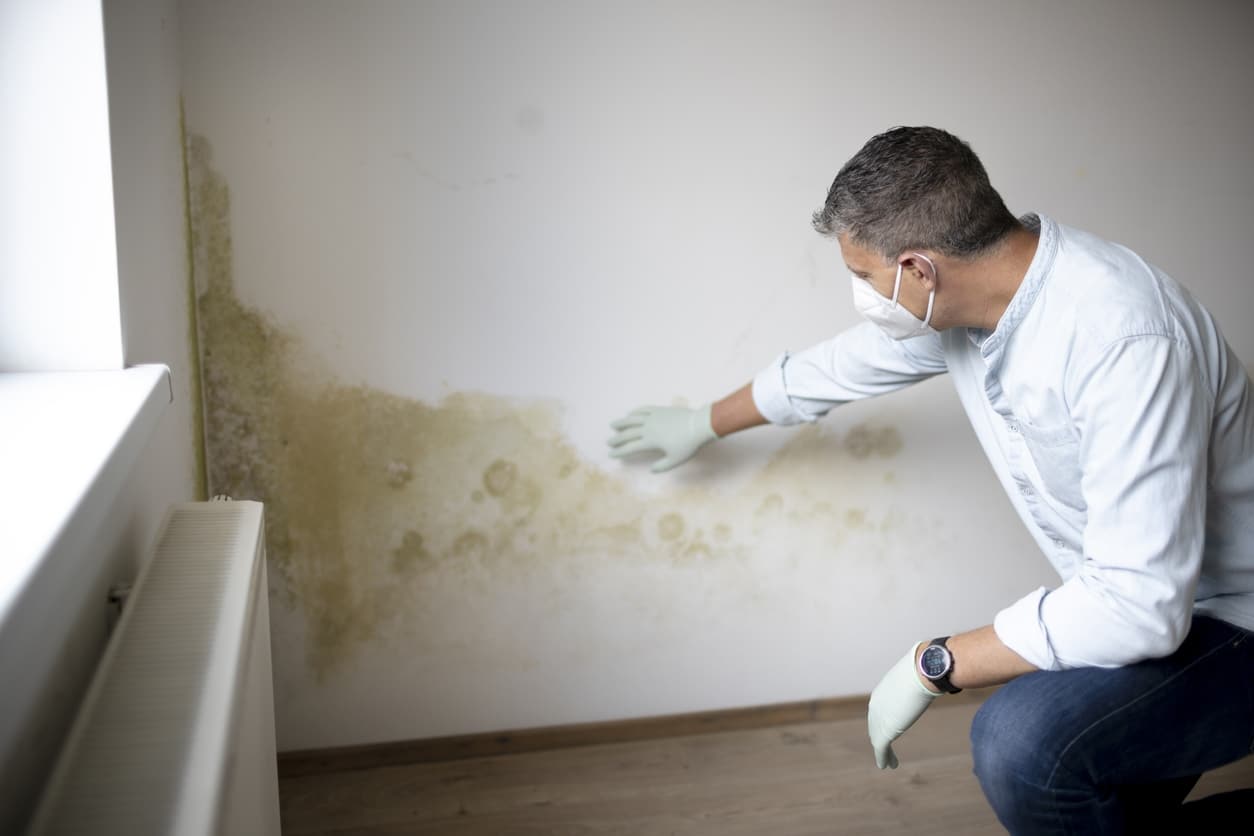You may not realize it, but a silent health risk is lurking in your home or workplace. Namely, mold growth. While you may not see mold growing on your walls, it could be just beneath the surface. Early exposure to mold, especially during childhood, can increase the risk of developing allergies and sensitivities later in life. Fortunately, the experts at Advanced Structural Drying Technologies in Tennessee are here to help you spot the signs of mold toxicity and address mold issues before they become serious.
Introduction to Mold
Mold is a common type of fungus that exists both indoors and outdoors, thriving in areas with high humidity and moisture. It can grow on a variety of surfaces, such as walls, floors, and even ceiling tiles, making it a frequent issue in homes and workplaces. Mold exposure occurs when individuals come into contact with mold spores, which are tiny particles released into the air. For people with compromised immune systems, the health effects of mold can be particularly severe, leading to mold allergies, allergic reactions, and in some cases, mold toxicity. Prolonged mold exposure can trigger a range of symptoms and health issues, making it essential to understand how mold affects our immune systems and overall well-being. By recognizing the risks associated with mold exposure, you can take proactive steps to protect your health and prevent mold-related problems.
How Mold Forms and Grows
Mold growth begins when excessive moisture combines with warmth and organic material, such as wood, drywall, or fabric. These conditions create the perfect environment for mold to thrive and multiply. Mold releases microscopic spores into the air, which can be inhaled and lead to allergic reactions or other health issues. To prevent mold growth, it’s important to control indoor humidity levels by using exhaust fans in bathrooms and kitchens, fixing water leaks promptly, and ensuring proper ventilation throughout your home or business. Regular cleaning and maintenance, especially in areas prone to dampness, can further reduce the risk of mold. Additionally, using mold-killing products and mold inhibitors on vulnerable surfaces can help stop mold from forming and spreading. By addressing sources of excessive moisture and maintaining low indoor humidity, you can significantly decrease the likelihood of mold becoming a problem in your indoor environment.
Types of Mold
There are many different types of mold, each with its own characteristics and potential health effects. Black mold, also known as Stachybotrys chartarum, is one of the most notorious types due to its ability to produce mycotoxins that can cause severe allergic reactions and mold toxicity. Aspergillus is another common mold that can trigger respiratory symptoms and allergic reactions, especially in individuals with weakened immune systems. Penicillium, often found on water-damaged materials, can also contribute to health issues such as respiratory discomfort and allergic responses. Understanding the specific types of mold present in your environment is important, as some varieties pose greater risks than others. Identifying and addressing the presence of black mold or other harmful molds can help prevent serious health effects and reduce the risk of mold toxicity.
The Top 10 Warning Signs of Mold Toxicity
Your health, your employees’ health, and your guests’ health are all important to you, and you do everything you can to maintain them. After being exposed to mold, individuals may develop symptoms such as coughing, sneezing, or headaches; recognizing these early can help prevent more serious health problems. This includes mitigating mold growth on your property—even the mold you can’t see. Here are the top signs that something sinister may be growing just out of sight:
Allergic Reactions
Approximately 10% of the general population suffers from a mold allergy. If you notice that people in your home or business are experiencing allergic reactions like sneezing or a runny nose—especially during winter, when seasonal allergies are rare—it may be a sign that you have mold. Allergy symptoms, such as itchy eyes, nasal congestion, and watery eyes, can also result from mold exposure. Mast cells in the immune system release histamine and other chemicals during allergic reactions to mold, contributing to these symptoms.
But if the problems persist, hire a restoration company, like ASDT, to test your home for mold and completely remove it. While you can’t cure an allergy, ridding your property of mold will help reduce your symptoms.
Cognitive Challenges
While it’s normal to have difficulty concentrating and feel forgetful at times, constant brain fog, memory loss, and other cognitive issues can be a sign of more serious problems, including mold toxicity. If you notice these concerns, especially alongside other changes, it’s of course wise to start with a trip to the doctor.
Digestive Issues
Sometimes, we eat something that doesn’t agree with us. However, if you are experiencing digestive problems, like nausea, diarrhea, abdominal pain, or bloating after eating certain foods, it may be an allergic reaction related to mold. Some people with mold allergies cannot eat certain foods due to cross-reactivity. These include:
- Mushrooms
- Certain types of cheese
- Sourdough bread
- Fermented foods, like kimchi
- Smoked or cured meats
- Alcoholic beverages
If you suspect you may be allergic to mold or any of these foods, stop consuming them to see if your symptoms subside. Then, consider having allergy testing done.
Eye Irritation
Due to their exposure to the outside world, our eyes are our most sensitive organs. Exposure to irritants, like mold, can cause them to water or itch. If you notice these symptoms, even after washing your eyes out with water, they may be caused by mold spores present in your home.
Fatigue
With work and other responsibilities, feeling tired sometimes is perfectly normal. In these cases, it’s important to get adequate rest. However, if you are experiencing long-term bouts of unexplained fatigue, also known as chronic fatigue, it may be a sign of mold toxicity.
Headaches
While they may seem mild, headaches can indicate more serious health problems. If you experience frequent headaches, it may be a sign of mold toxicity, especially if accompanied by feelings of dizziness.
Mental Health
Our moods can vary from day to day, depending on what is going on in our lives. However, our environments can affect our mental health. Exposure to mold in one’s environment is linked to anxiety and depression.
Common signs that you may be experiencing these conditions include mood swings and irritability. If you notice your mood improving when leaving home, it may indicate your condition is mold-related.
Respiratory Issues
The most commonly recognized signs of mold exposure are respiratory issues. Many of the symptoms of mold toxicity affect the respiratory system and cause flare-ups of related conditions like asthma. If you notice yourself frequently coughing, experiencing shortness of breath, or having difficulty breathing, it may be one of these signs.
Throat irritation is another common respiratory symptom caused by inhaling mold spores, which can irritate the respiratory tract and worsen conditions like asthma.
In some cases, mold exposure can lead to severe symptoms such as persistent coughing, wheezing, or even pneumonia, especially in vulnerable individuals.
Skin Irritation
Our skin is our largest organ. As such, it is exposed to a lot of environmental elements, like mold. In these situations, it can present with symptoms like itching or visible rashes, including itchy skin and skin rash. In the case of mold exposure, you may notice a red, raised rash on your skin. Cortisone cream and moisturizer can help ease skin irritation from mold.
Visible Mold
While not related to your personal health, visible mold in your home should be removed quickly. Some types of visible mold, such as toxic mold, can pose serious health risks and require professional remediation. While you may be tempted to do so yourself, it is best to hire professionals with access to tools and training that allow them to safely remove mold. That way, you eliminate any potential health risks.
Effects of Mold on Daily Life
Living or working in a moldy environment can have a significant impact on your daily life, especially if you have mold allergies or a compromised immune system. Mold exposure is known to cause a range of common symptoms, including allergic rhinitis, persistent respiratory symptoms, and skin rashes. In more severe cases, mold exposure can lead to chronic lung disease, worsening asthma symptoms, and even serious infections. Beyond physical health, mold can also affect cognitive function, leading to issues like brain fog, mental confusion, and other cognitive difficulties. These effects of mold can disrupt your ability to concentrate, work, or enjoy daily activities. Maintaining good indoor air quality and taking steps to prevent mold growth are essential for reducing the health risks associated with mold and ensuring a safe, comfortable living environment.
Treatment Options for Mold Toxicity
Addressing mold toxicity involves a combination of environmental and medical interventions. The first step is to remove the source of mold exposure by thoroughly cleaning affected areas, using mold-killing products, and improving ventilation to lower indoor humidity levels. It’s also important to repair any water leaks and use dehumidifiers or exhaust fans to keep indoor humidity in check. For those experiencing health issues related to mold, seeking medical attention is crucial. Treatment may include medications to manage allergic reactions or respiratory symptoms, and in some cases, allergy shots to help reduce sensitivity to mold allergens. Improving indoor air quality by using high-efficiency particulate air (HEPA) filters and regularly cleaning can further help alleviate symptoms. By combining environmental controls with appropriate medical care, individuals can recover from mold toxicity and protect their long-term health.
Stop Mold Growth With ASDT’s Expert Mitigation Services
Each of these symptoms on its own can be a perfectly normal part of life, or a symptom of many, many other things. However, taken together, they could signal that it’s time to investigate a mold issue. Individuals with a preexisting health condition, such as asthma or immune system problems, may be at greater risk for complications from mold exposure. This is especially true if you’ve recently experienced any form of water damage or storm damage.
After you’ve gotten your own health checkup from a healthcare professional, it’s time to get your property a checkup, too. Mold growth can happen quickly, so you need to act just as fast to reduce the risks it presents to your health and safety. The experts at ASDT can help you do just that.
Our mold mitigation services focus on prevention as they include water damage repair and comprehensive testing. Effective mold treatment may involve both environmental remediation and medical management, especially in cases of significant mycotoxin exposure. Contact us today to learn more about our mold removal services and how we can keep you safe and healthy.
Prevent Mold Toxicity in Arrington, TN with Help From ASDT
If your home or business in the Southeast has been affected by mold, especially indoor mold, ASDT is here to help. Our dedicated team offers expert mold mitigation services focused on prompt, personalized solutions to safeguard your health. Contact us online or at 615-207-3877 today to learn how we can create a safer, healthier environment by removing the risks associated with mold.






